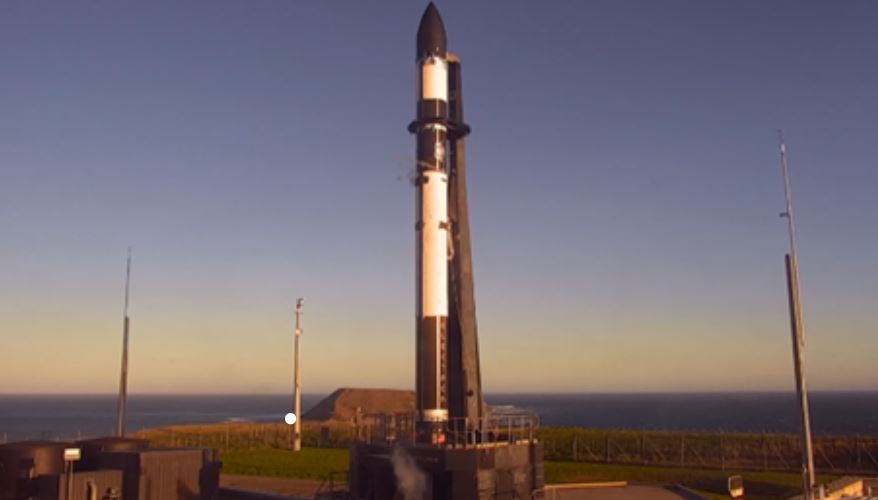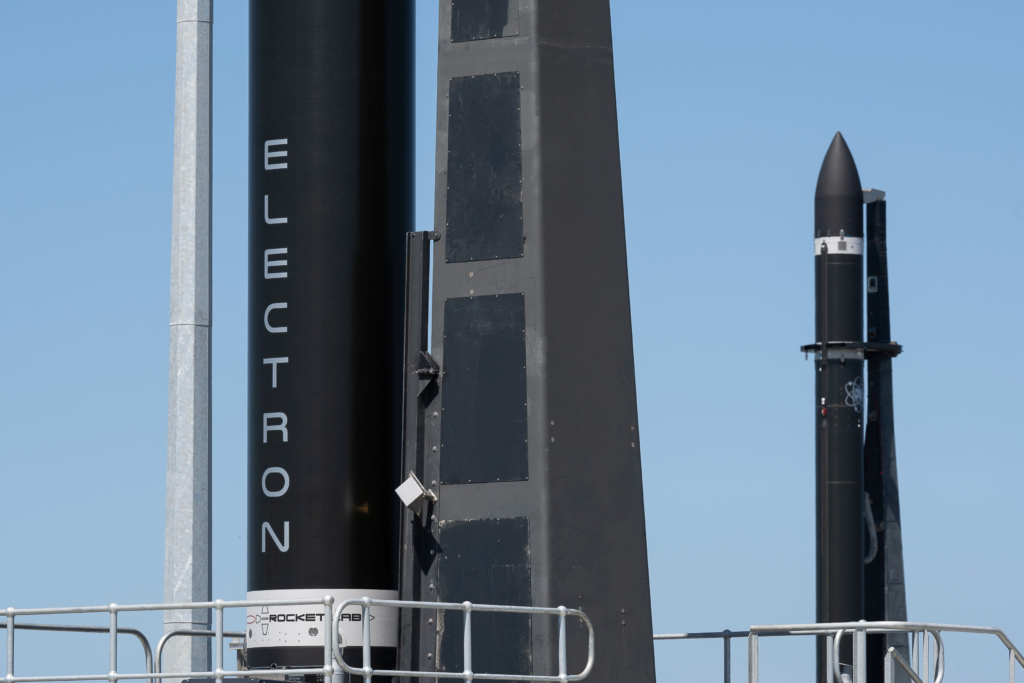
Rocket Lab Is About To Launch The First Of Two Back To Back Missions
Rocket Lab per usual has been staying very busy and making the most of different launch opportunities and more. Not long ago the company finished the second launch pad at Launch Complex 1 in New Zealand. This was an important addition of infrastructure that has allowed Rocket Lab to increase its launch cadence and prepare for multiple missions at the same time.
Only days ago we watched Electron take off on the company’s first mission to the Moon. Now after the previous mission’s success, Rocket Lab is about to launch again this time for the National Reconnaissance Office. Specifically, yesterday the company highlighted that the Wet Dress Rehearsal is complete and the payload is securely integrated to Electron for the first of two back-to-back missions.
Electron has managed to become an extremely popular option within the small-lift launch vehicle category. This has increased Rocket Lab’s business and opened up more opportunities as they work on bigger and better projects such as Neutron. Here I will go more in-depth into recent updates on this mission, when it will happen, and more.
Recent Updates

Starting July 6th, Rocket Lab tweeted saying, “Responsive space needs responsive launch pads – and at LC-1, we have two. Our two missions for @NatReconOfc will launch within days of each other this month from Pad A and Pad B at Launch Complex 1, the world’s first private orbital launch range.” Back in February of this year, Rocket Lab announced the completion of its second orbital launch pad at Launch Complex 1 in New Zealand. With two launch pads and private range assets at Launch Complex 1, concurrent launch campaigns are possible from the site. This enables resilient access to space by accommodating tailored customer requirements or late changes to a spacecraft while keeping Rocket Lab’s manifest on schedule. Operating two pads also eliminates pad recycle time, ensuring a launch pad is always available for a rapid-response mission. Launching from a private launch complex, Rocket Lab is also able to avoid the lofty range fees and overheads typically associated with shared launch sites, resulting in a cost-effective launch service for satellite operators. Back at the time of the announcement, Rocket Lab founder and CEO, Peter Beck, said, “A reliable launch vehicle is only one part of the puzzle to unlocking space access – operating multiple launch sites so we can launch when and where our customers need to is another crucial factor. We are proud to be delivering responsive space access for our customers, making back-to-back missions possible within hours or days, not weeks or months. “Even with just one pad at Launch Complex 1, Electron quickly became the second most-frequently launched U.S. rocket every year. Now, with two pads at Launch Complex 1 and a third in Virginia, imagine what three pads across two continents can do for schedule control, flexibility, and rapid response for satellite operators globally.” All of which apply to the current mission expected to launch very soon.
Only a few days later on the 7th, they tweeted again this time mentioning, “Payload integration is complete for our first of two @NatReconOfc responsive space missions! NROL-162 is set to launch NET July 12th, with NROL-199 to follow just days later from our second pad.” Just 1 day prior, the company provided another update highlighting, “L-1 day to launch for the @natreconofc! Wet Dress Rehearsal is complete and the payload is securely integrated to Electron for our first of two back-to-back missions.” Finally, today Rocket Lab tweeted a final time saying, “With strong wind and heavy rain forecast for launch day, we’re moving launch for @natreconofc – now targeting NET July 13th.”
Back-to-Back Launches

Now that we know more about the schedule and some of the recent updates, we can take a closer look at the mission itself and what to expect in the coming days. The mission, named Wise One Looks Ahead, is the first of two back-to-back launches for the National Reconnaissance Office. Launching from Rocket Lab Launch Complex 1 on two Electron rockets, Rocket Lab is scheduled to deploy satellites to space for the NRO within only 10 days of each other. Wise One Looks Ahead (NROL-162) will launch from Launch Complex 1’s Pad A no earlier than July 12, 2022, with Antipodean Adventure (NROL-199) scheduled to launch from Pad B no earlier than July 22, 2022.
The NROL-162 and NROL-199 missions will carry national security payloads designed, built, and operated by the National Reconnaissance Office in partnership with the Australian Department of Defence as part of a broad range of cooperative satellite activities with Australia. The satellites will support the NRO to provide critical information to government agencies and decision makers monitoring international issues. These twin missions will be a demonstration of responsive launch under NRO’s Rapid Acquisition of a Small Rocket (RASR) contract for launching small satellite through a streamlined, commercial approach, and are the third and fourth missions contracted to Rocket Lab by the NRO under the contract. NROL-151 (RASR-1) was successfully deployed to space on a dedicated Electron launch in early 2020, followed by RASR-2 on another Electron launch in June 2020.
The NRO is the leader in developing, acquiring, launching, and operating the nation’s intelligence, surveillance, and reconnaissance satellites to secure and expand America’s advantage in space. The NRO is building a diversified and resilient architecture of spacecraft and ground systems designed to meet the challenges of a changing space environment by accelerating innovation and leveraging strategic partnerships, backed by a highly skilled workforce. Since 1961, the NRO has pushed the envelope of U.S. space-based intelligence collection with boldness and ingenuity. Today, the NRO’s innovative legacy continues to thrive as it develops, acquires, launches, and operates the world’s most capable national security satellites. NROL-162 will strengthen the NRO’s ability to provide a wide range of timely intelligence information to national decision makers and intelligence analysts to protect the United States’ vital interests and support humanitarian efforts worldwide. The NROL-162 & 199 missions are the latest examples of the NRO’s commitment to enhancing relationships with U.S. allies and partners and demonstrates the NRO’s capability to launch multiple rockets from overseas locations back-to-back.
Data and imagery from the right place at the right time can provide decision-makers with insights into ship and plane movements, weather patterns, and economic activity. During humanitarian crises, satellite data can reveal troop movements and refugee streams that help governments, first responders, and aid organizations focus on where they’re needed the most. But the way these systems reach space can still be a long and expensive process. The faster satellites can be placed in space, the more capable a country’s space infrastructure will be. Modern nations require a modern approach to space – one that includes more a flexible, faster, and cheaper access to orbit with responsive rockets, responsive launch pads, and responsive satellites. Rocket Lab points out that they have all three.
Responsive satellites are ones which can test new technologies, replace broken or destroyed spacecraft, or fill out a constellation that provides on-demand communication, location services, and exchanges data with millions of people across the globe. They should be small, simple to build, and offer flexibility in their service – which is exactly the type of platform our spacecraft bus, Photon, was designed to deliver. You then have Responsive launch vehicles, which need to be able to get to space quickly and affordably, and do so reliably. They also need to be able to deliver payloads to their specific orbital destination with pinpoint accuracy. With 146 satellites (and counting) delivered to their orbital destinations across 26 missions, Rocket Lab is confident in the capabilities of Electron. And with a strong heritage of accurate orbital insertion for the payloads they’ve flown, Electron is relied upon to deliver mission success across both government and commercial space operators. With responsive satellites needing responsive rockets, the third and final solution is the responsive launch site to fly them. Rocket Lab points out that launchers that use public sites will always be at the whim of tight launch corridors, busy range schedules, and small gaps in overhead air traffic. A responsive launch site is one that stands ready to support rapid call-up launch with unrivaled launch opportunities – and with two orbital launch pads (a third at Launch Complex 2 on Wallops Island, Virginia, expected to be operational in 2022), private range control, and 120 flight opportunities a year, Rocket Lab Launch Complex 1 provides the possibility of back to back launches within hours or days, not weeks or months.
Conclusion
While the company just finished its most ambitious mission yet with CAPSTONE, they are already onto the next task. They will soon launch back to back with two different Electron rockets apart of the same mission. We will have to wait and see how it progresses and the impact it has on the space industry.